“Hokoten” translates literally as “Walker’s Paradise”, and it refers to the practice of (temporarily) switching a roadway from vehicular use to pedestrian use, usually during lunch hour, weekends, or special events.
Currently, there are three major weekly Hokoten in Tokyo (the following facts & figures come from the Tokyo Metropolitan Police):
Akihabara:
- ~570 meters (~1,870 feet) of Chuo-dori (highlighted below in red).
- Sundays
- April – September: 1 pm – 6 pm
- October – March: 1 pm – 5 pm
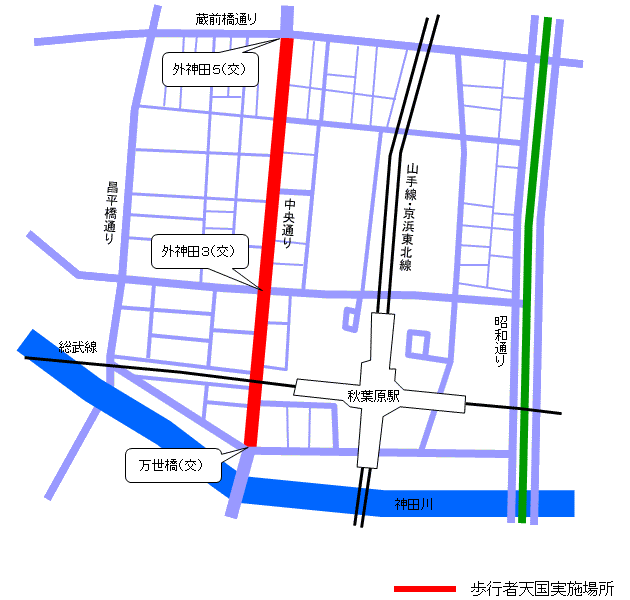
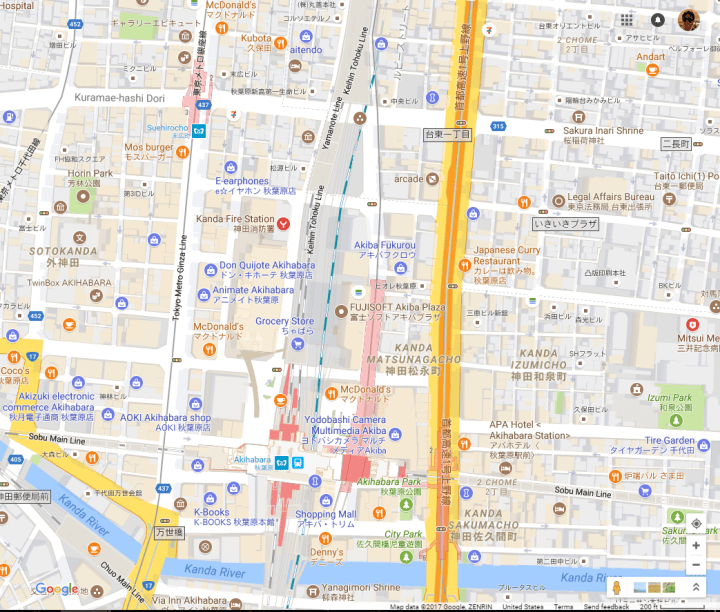
Ginza:
- Approximately 1,100 meters (~3,610 feet) of Chuo-dori (highlighted below in red).
- Saturdays, Sundays, holidays
- April – September: noon – 6 pm
- October – March: noon – 5 pm

Shinjuku (新宿3丁目):
- An area of ~30 city blocks on the NE side of Shinjuku Station, the main trunk of which is approximately 730 meters (~2,400 feet).
- Sundays & holidays
- April – September: noon – 6 pm
- October – March: noon – 5 pm
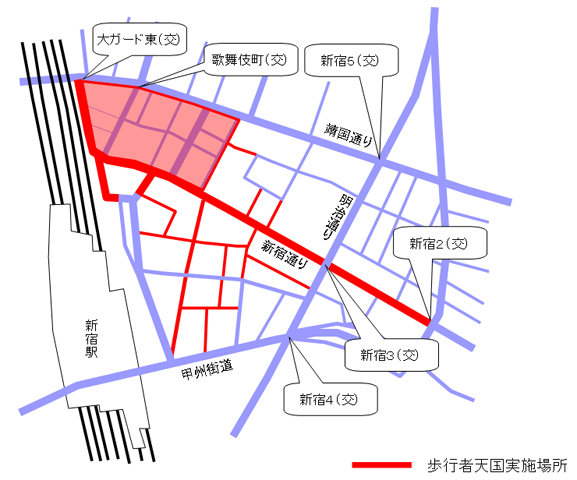
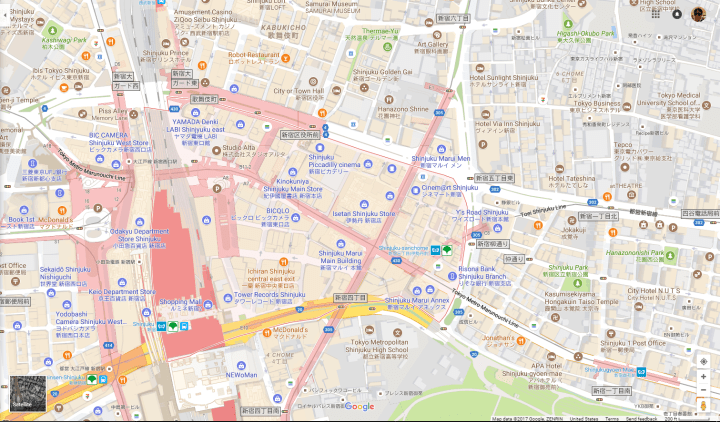
Additionally, there are lunch-time Hokoten such as in Kagurazaka, and since 2016, a very large area in Shibuya (~50 city blocks) has been Hokoten-ized for the New Year’s countdown:
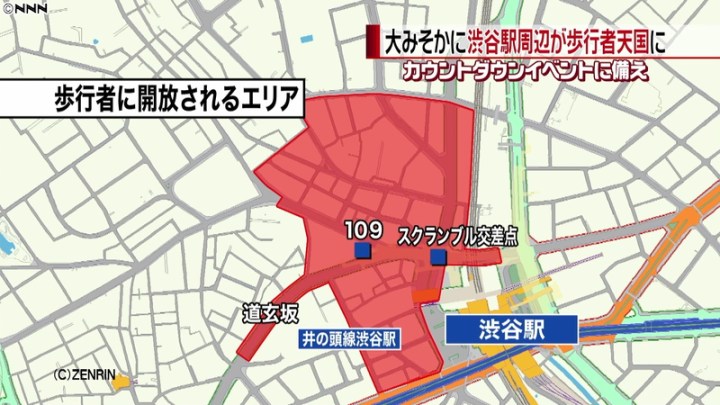
Here is the Hokoten area for the Azabu Juban Noryo Festival:
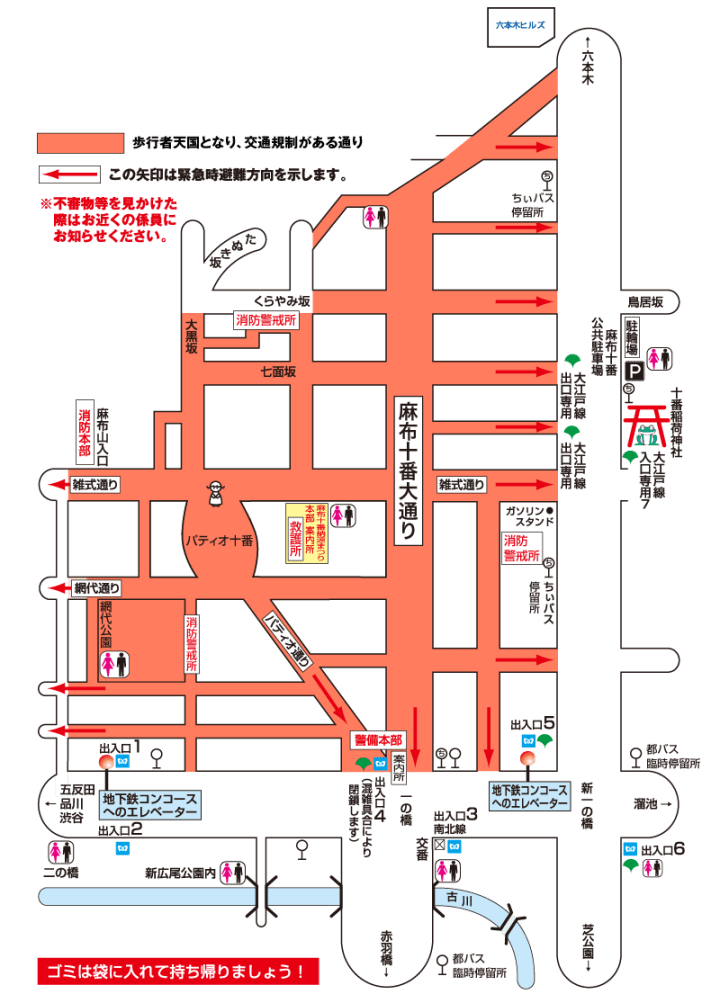
Last but not least, many many commercial streets all across Tokyo become de-facto Hokoten every night, as can be seen (for example) in these two walk-through videos of Shibuya (especially Udagawa-cho):
In the above video from Rambalac, Hokoten areas are shown from 5:42 to 8:54 (Center Street), and from 15:40 to 18:51 (Mark City area).



One thought on “Hokoten: Tokyo’s Big Three (ホコ天 / 歩行者天国)”